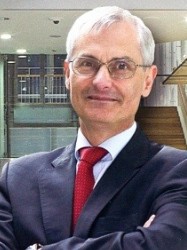BibTex format
@article{Crossley:2019:10.1103/physrevx.9.041002,
author = {Crossley, S and Nair, B and Whatmore, RW and Moya, X and Mathur, ND},
doi = {10.1103/physrevx.9.041002},
journal = {Physical Review X},
title = {Electrocaloric cooling cycles in lead scandium tantalate with true regeneration via field variation},
url = {http://dx.doi.org/10.1103/physrevx.9.041002},
volume = {9},
year = {2019}
}

